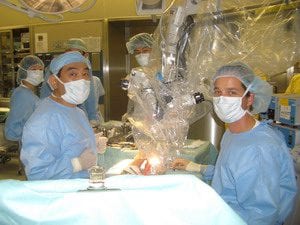 Modern lymphedema surgeries are considered safe by those familiar with the procedures. In the past, lymphedema surgeries were less successful and much more invasive. The procedures were mostly ablative, meaning that large amounts of tissue including skin and deeper structures were removed. Patients often ended up with significant disfigurement and problems after the surgeries.
Modern lymphedema surgeries are considered safe by those familiar with the procedures. In the past, lymphedema surgeries were less successful and much more invasive. The procedures were mostly ablative, meaning that large amounts of tissue including skin and deeper structures were removed. Patients often ended up with significant disfigurement and problems after the surgeries.
Modern Lymphedema Surgical Treatment
Modern lymphedema procedures are much less invasive, much more effective and much safer. These procedures include:
- Vascularized lymph node transfer (VLNT)
- Lymphaticovenous anastomosis (LVA)
- Granzow Suction assisted protein lipectomy (Granzow SAPLSM)
We know of no cases of lymphedema-associated complications with LVA or Granzow SAPLSM surgeries. These procedures are performed through only very small skin incisions.
LVA allows the reduction of the fluid component of the lymphedema swelling, which can result in less heaviness, fullness and swelling and improvement in symptoms in many patients.
SAPLSM involves the removal of the solid portion of the lymphedema swelling and consistently results in the safe reduction of considerable amounts of excess volumes in the affected arm or leg.
Vascularized Lymph Node Transfer (VLNT)
Vascularized lymph node transfer, which involves the movement of lymphatic tissue, plus a small amount of surrounding tissue from an unaffected area to the area affected by swelling, has had a small number of reports of donor site related issues in the medical literature. These reports are rare, but donor site swelling at the harvest site does remain a real, although small, risk in this procedure. This risk is present whether the donor site is the groin, torso, or supraclavicular area (neck) and is a theoretical possibility from all donor sites.
The risk of donor site swelling can be reduced tremendously with reverse lymphatic mapping. This is a specialized type of imaging involves mapping the donor site lymphatics, and lets an experienced lymphedema surgeon avoid borrowing lymph nodes that help drain the arm or leg adjacent to the donor site. We know of no reports of lymphedema in an arm or leg being caused during a VLNT when reverse lymphatic mapping has been employed.
Discussing Surgical Options
Any surgery, lymphedema or otherwise, carries a small amount of standard surgical and anesthesia risk. The experience and technique of the surgeon are very important in helping to minimize any type of surgical risk with any lymphedema surgical treatment.
Dr. Granzow is a Princeton graduate, who is Board Certified by the American Board of Plastic Surgery. During your consultation, he will discuss the options with you to determine your best course of treatment.